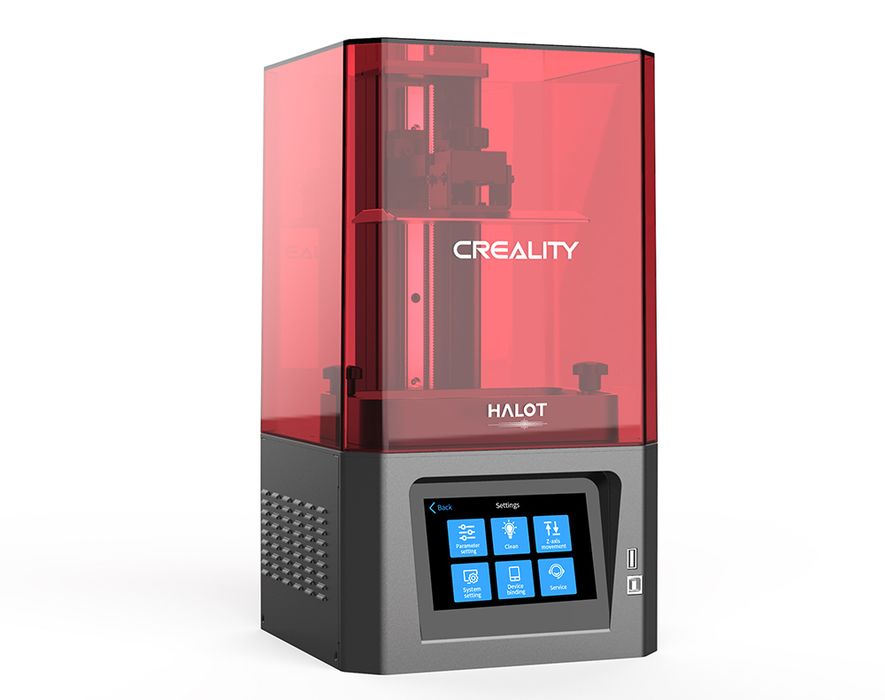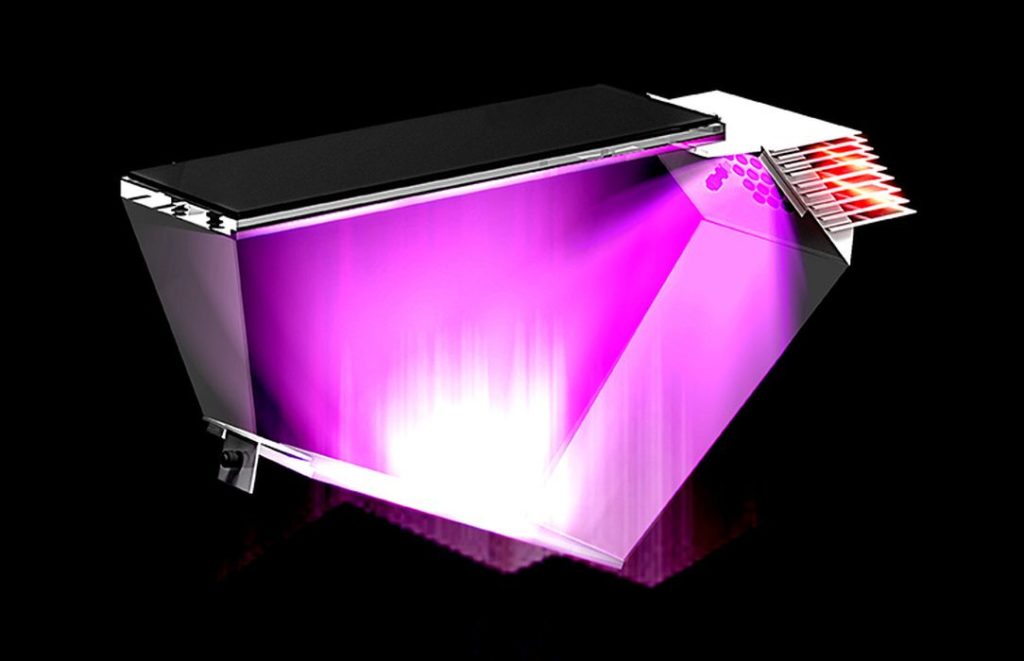
SPONSORED CONTENT
Creality launched a new resin 3D printer, the HALOT-ONE CL60.
The device is part of the company’s new HALOT line of resin 3D printers. Previously, we took a look at another device from this line, the HALOT-SKY.
The HALOT line now includes three members: the HALOT SKY, the HALOT-MAX and the new HALOT-ONE. The HALOT-MAX offers the largest build volume at 293 x 165 x 300 mm, and the HALOT-SKY is intermediate in volume at 192 x 120 x 200 mm. The new HALOT-ONE is the smallest of the series with a build volume of 127 x 80 x 160 mm.
For many operators, the smaller build size is ideal for small but highly detailed objects, and the HALOT-ONE also carries a much lower purchase price.
All machines in the HALOT series include several powerful features:
- 64-bit 4-core controller board
- Color touchscreen
- “Integral Light Source”
- WiFi networking
- Monochrome LCD screen for rapid 3D printing
Let me explain the “Integral Light Source” more deeply. Like all MSLA systems, the HALOT machines include an LCD screen that masks pixels of illumination from a light source. That’s how voxels are selectively polymerized, but it requires a highly accurate light source to be successful.

Many 3D printer manufacturers have tried different schemes for increasing light quality, but on the HALOT series this is done with the Integral Light Source. It’s a specially designed combination of LED light source, lenses and mirrors to deliver light to the bottom of the resin tank.
Normally light is simply bounced off a flat mirror to do so, but this results in distorted light beams as the angle of the beam changes across the resin surface. The Integral Light Source corrects this effect by using lenses to distort the beams in such a way that they are perfectly aligned when they arrive at the resin surface.
This results in higher-quality and more reliable 3D prints, particularly larger prints that occupy most of the build volume.
A word about resolution is required to explain the HALOT-ONE’s performance. The specifications say the device uses a 2560 x 1620 pixel LCD panel to mask light on each layer, while its larger cousin, the HALOT-SKY, uses a 4K panel with 3840 x 2400 pixel LCD panel. At first, you might think the smaller LCD panel might compromise print resolution, but that’s not the case here.
The HALOT-ONE prints in an area of 127 x 80 mm, while the HALOT-SKY prints in a much larger area of 192 x 120 mm. If you do the calculations, you’ll find that both machines deliver a resolution of near 20 pixels per mm. In other words, the HALOT-ONE has the same resolution as the larger HALOT-SKY, but prints in a smaller volume.
The smaller HALOT-ONE also has the same print speed as the HALOT-SKY, with approximately 1-4 seconds per layer depending on the resin used. This is a huge speed for desktop MSLA 3D printers and should provide more useful lifetime for the LCD panel: it doesn’t need to work as much on each print job.
Leveraging its network connection, the HALOT-ONE can also update firmware over the air, making machine maintenance much simpler than other equipment that requires specialized software, cables and laptops.
These are all advanced features for a resin 3D printer, yet they are available on the HALOT-ONE at a low cost. What is that low cost? Incredibly, Creality is listing the HALOT-ONE at a price of only US$199. This is a breakthrough price that I have seen on very few resin 3D printers, and none that has the features of the HALOT-ONE.
Anyone seeking a low-cost, high-performance MSLA 3D printers should consider the new HALOT-ONE.
Via Creality
